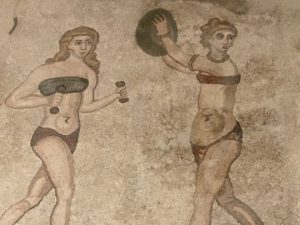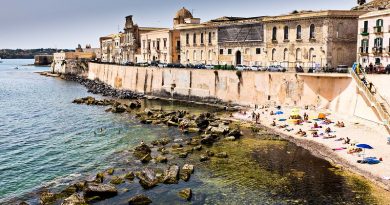Sicily’s Hidden Roman Treasure: The Bikini
In the 3rd Century BC, the Romans overthrew the Greek cities and states that had existed and ruled the island of Sicily for hundreds of years.The Romans adopted many Greek cultural icons, forms and architectural practices including the creation of elaborate mosaic floors for their villas, palaces and public building.For hundreds of years one of their greatest creations lay buried and undiscovered beneath a giant mud slide in the centre of the island near the town of Piazza Armerina.Because of the massive scale of the mosaic floors here, The Villa Romana del Casale was thought to have been built by Maximian, a co-Emperor with Diocletian in the 3rd Century AD.

It is thought the mosaics decorating 40 rooms were the co-creation of Roman artisans and North African craftsmen. The most distinctive murals are to be found in The Room of the Ten Maidens – ten scantily clad female gymnasts, known as the Bikini Girls.All the scenes normally excluded from Christian art lie in this kaleidoscope of life celebrating hunting, fishing, dancing, discus throwing, massage and lovemaking.Also featured are elaborate hunting schemes. The Corridor of the Great Hunt is a swirling mass of movement featuring chariots, lions, cheetahs and rhinos.



